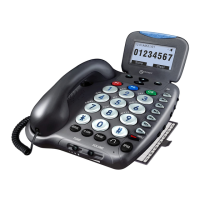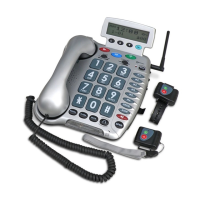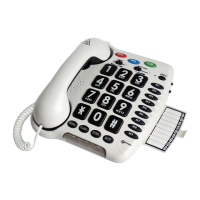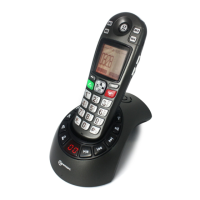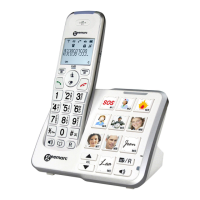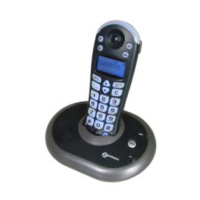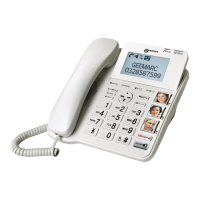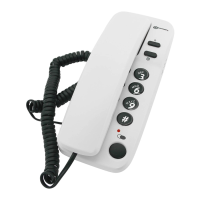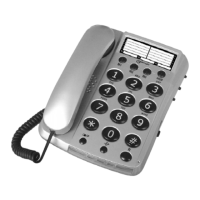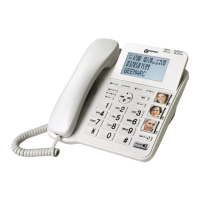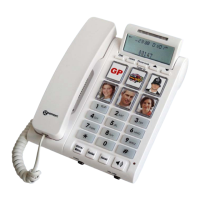Do you have a question about the Geemarc AMPLIPOWER60+ and is the answer not in the manual?
Essential safety precautions to reduce risks of fire, electric shock, and injury when using the telephone equipment.
Details the items expected to be found in the box when unpacking the Geemarc AMPLIPOWER60+™ telephone.
Instructions for connecting the handset cord, inserting batteries, and connecting the line cord and power adaptor.
Configuration of the 3-position switch for ringer, shaker, and strobe flash activation.
Adjusting the ringer volume to Off, Low, or High, and selecting melodies.
Guidance on setting the TONE/PULSE switch for compatibility with different telephone exchanges or PBXs.
Information on the TBR switch, pre-set to 600ms, switchable to 100ms for specific locations or PBXs.
Instructions for using the switch to enable the hotel message waiting function and indicate new messages.
Steps for securely mounting the telephone to a wall using the integrated clip and provided screws.
Procedures for answering calls using the handset, optional headset, or handsfree mode.
How to adjust receiving volume and tone for individual hearing needs, including extra receiving functions.
Steps for initiating calls using the handset, optional headset, or handsfree mode.
Instructions on how to redial the last number called using the REDIAL button.
Explanation of the use of FLASH, *, and # buttons with digital exchanges and network services.
How to use the MUTE button to speak privately by blocking your voice from the caller.
Guide to storing up to 12 direct memories, including 3 priority numbers, for quick dialing.
Procedure for dialing numbers stored in the phone's memory using the designated buttons.
| Amplification | 60 dB |
|---|---|
| Ringer Tone | Adjustable |
| Speakerphone | Yes |
| Compatibility | Hearing Aid Compatible |
| Emergency Button | Yes |
| Maximum Ringer Volume | 90 dB |
| Visual Ringer Indicator | Yes |
| Large Buttons | Yes |
| Memory Dial Buttons | Yes |
| Wall Mountable | Yes |
| Volume Control | Yes |
| Tone Control | Yes |
| Caller ID | Yes |
| Memory | Yes |
| Handset | Corded |
| Backlit Keypad | Yes |
| Battery Backup | Yes |
| Type | Corded Telephone |
| Power Source | Mains |
